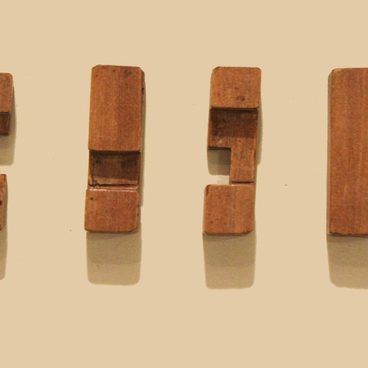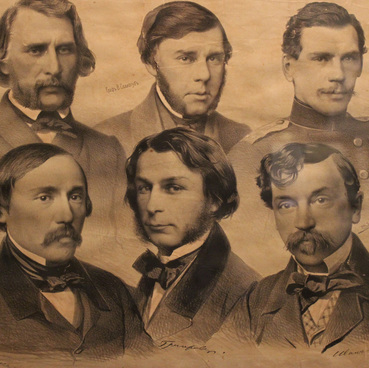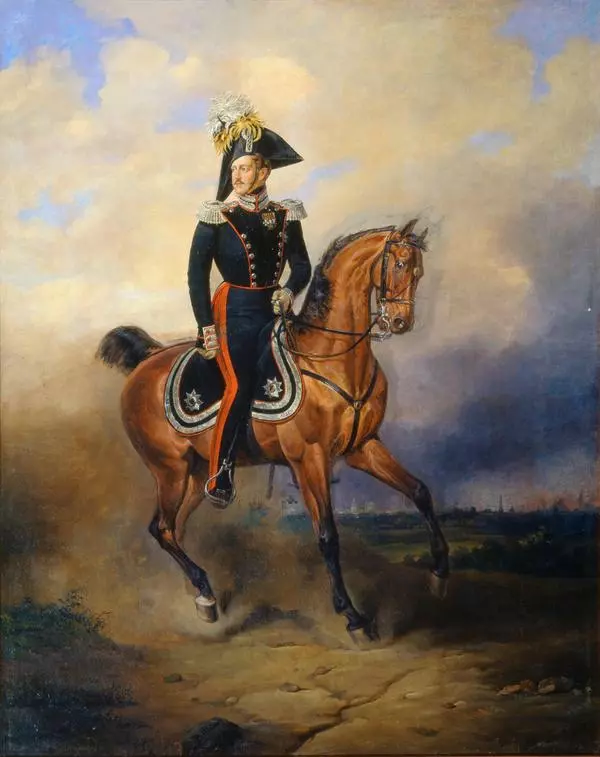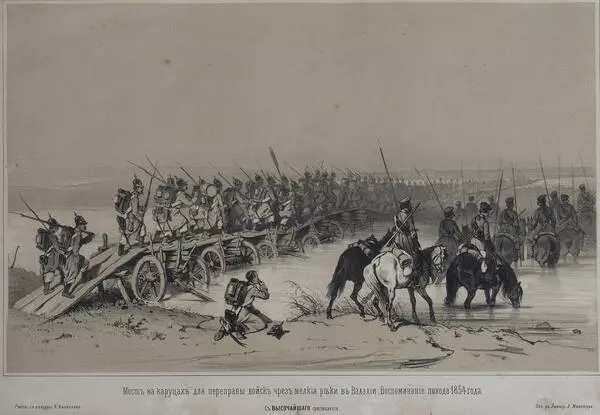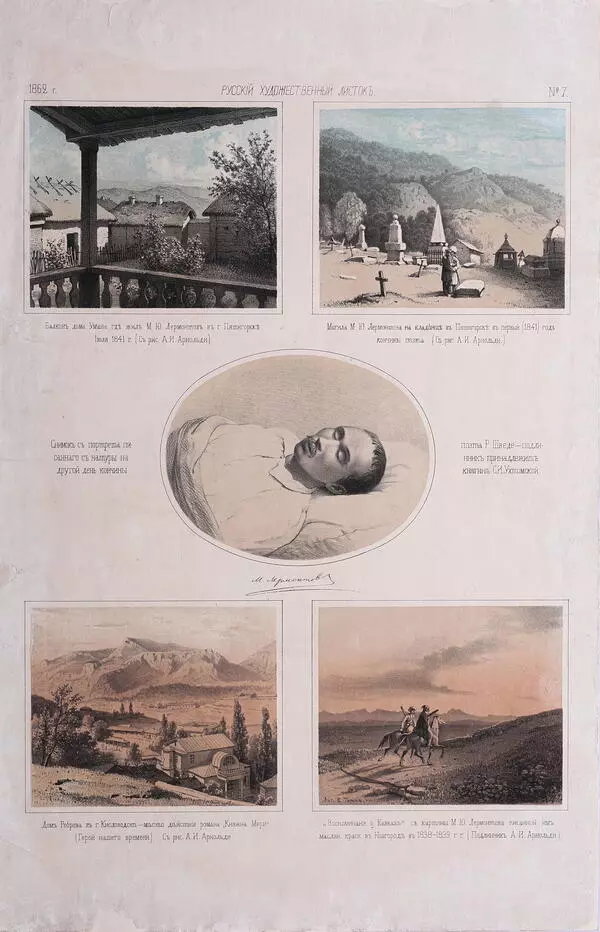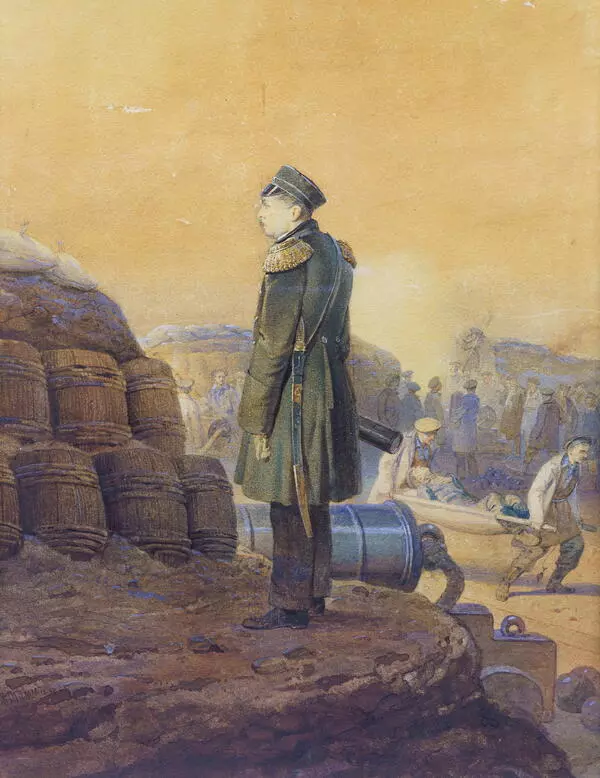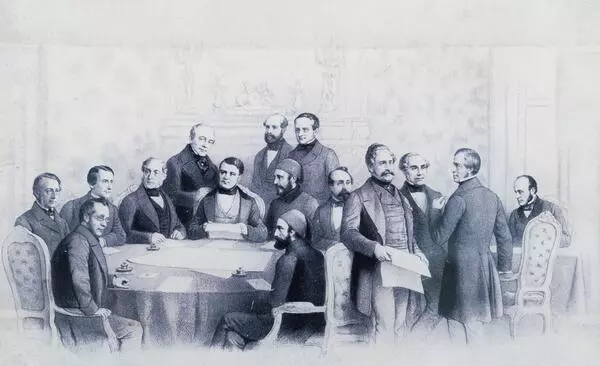Georg Wilhelm Timm, German by birth, was known in Russian culture as Vassily Fedorovich Timm. He graduated from the St. Petersburg Academy of Arts and shortly became a first-class illustrator. Timm materialized subjects of unassuming Russian fiction in his intrinsically brilliant graphic fashion and with soft, gentle irony.
Lithographs were printed in Alexander Munster’s workshop in double tone. Timm made a lot of drawings himself, but he also engaged other well-known artists, including Pavel Sokolov, Konstantin Trutovsky, Mikhail Mikeshin.
Timm provided his drawings not only with a brief description on the sheet, but also with a more detailed narrative in a stand-alone publication. Such texts were authored by journalist and publisher Nikolay Gretch.
Vassily Timm’s Leaflets were circulated by subscription. The form of their delivery to subscribers was of interest: a more expensive way was to screw a leaf on a stem and sew it around with a canvas, while a cheap way was to put a folded lithograph in an envelope. The sheet with the narrative was sent in an envelope.
The major subjects for the lithographs were scenes of folk life, portraits of prominent figures, on-the-spot reports, especially from Sevastopol during the Crimean War. The interest of contemporaries was paramount: the publication was popular not only in the capital city, but also in provinces. For instance, the library of one of the old factories in the Urals still keep copies of the ‘Leaflet’ received by its former owner.
Timm’s lithographs usually contained one or two images, but the sheet displayed in the exhibition contains three drawings. All of them are connected with the Crimean War: a portrait of Major General Ilya Orbeliani, a Russia monastery at Mount Athon, and the battle of Cetate. Every image is supplemented with a brief abstract.
Ilya Orbeliani, a Major General of the Russian Imperial Army died a hero’s death during the Crimean War. Orbeliani and his grenadiers were supposed to assault the main Turkish artillery battery at Bashkadyklar. At the very beginning of the assault, a bullet pierced his hand, but without paying attention to the wound, he turned about on horseback and shouted: ‘Go bravely, grenadiers! ’. At the same time, another bullet pierced his shoulder blade and stopped in the chest. He was taken to Alexandroupolis, and he died there, having asked for the regimental banner pierced with bullets to be brought to him before his death: he kissed the banner and died.
Lithographs were printed in Alexander Munster’s workshop in double tone. Timm made a lot of drawings himself, but he also engaged other well-known artists, including Pavel Sokolov, Konstantin Trutovsky, Mikhail Mikeshin.
Timm provided his drawings not only with a brief description on the sheet, but also with a more detailed narrative in a stand-alone publication. Such texts were authored by journalist and publisher Nikolay Gretch.
Vassily Timm’s Leaflets were circulated by subscription. The form of their delivery to subscribers was of interest: a more expensive way was to screw a leaf on a stem and sew it around with a canvas, while a cheap way was to put a folded lithograph in an envelope. The sheet with the narrative was sent in an envelope.
The major subjects for the lithographs were scenes of folk life, portraits of prominent figures, on-the-spot reports, especially from Sevastopol during the Crimean War. The interest of contemporaries was paramount: the publication was popular not only in the capital city, but also in provinces. For instance, the library of one of the old factories in the Urals still keep copies of the ‘Leaflet’ received by its former owner.
Timm’s lithographs usually contained one or two images, but the sheet displayed in the exhibition contains three drawings. All of them are connected with the Crimean War: a portrait of Major General Ilya Orbeliani, a Russia monastery at Mount Athon, and the battle of Cetate. Every image is supplemented with a brief abstract.
Ilya Orbeliani, a Major General of the Russian Imperial Army died a hero’s death during the Crimean War. Orbeliani and his grenadiers were supposed to assault the main Turkish artillery battery at Bashkadyklar. At the very beginning of the assault, a bullet pierced his hand, but without paying attention to the wound, he turned about on horseback and shouted: ‘Go bravely, grenadiers! ’. At the same time, another bullet pierced his shoulder blade and stopped in the chest. He was taken to Alexandroupolis, and he died there, having asked for the regimental banner pierced with bullets to be brought to him before his death: he kissed the banner and died.
